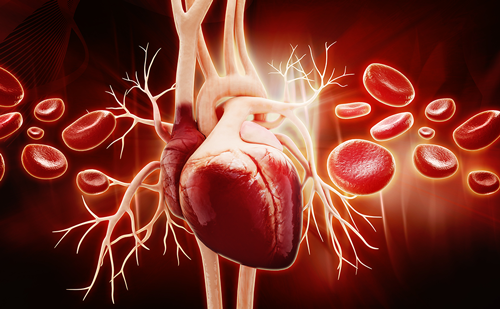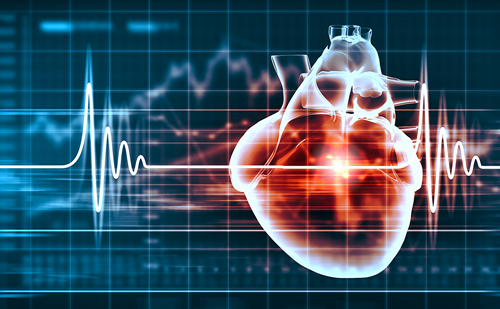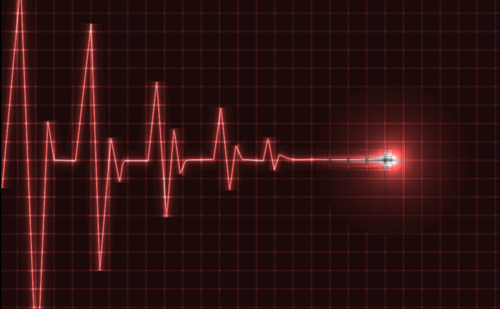Hypertension (HTN) is one of the largest contributors to cardiovascular (CV) morbidity and mortality in the USA and is estimated to affect 47% of the adult population or approximately 122 million adults older than 20 years of age.1 Recent estimates suggest that over 40% of these patients continue to have uncontrolled blood pressure (BP) and that almost one-third of the patients with HTN in the USA are non-adherent to their medication regimens.1,2 A recent meta-analysis including 48 randomized studies of antihypertensive therapy demonstrated that a reduction of only 5 mmHg in systolic BP (SBP) resulted in a 10% reduction in major CV events, including a 13% reduction in stroke and heart failure, an 8% reduction in ischaemic heart diseases and a 5% reduction in CV death.3 The meta-regression analysis of the same data suggested a further reduction in CV events with a greater BP control.3 Thus, additional non-pharmacological therapies with the potential for even modest BP reduction in patients with uncontrolled HTN could lead to a substantial reduction in the risk of CV events in the USA.
Renal denervation technologies
Renal denervation (RDN) is an invasive treatment modality that uses catheter-based techniques to target and ablate renal sympathetic nerve fibres surrounding the renal arteries that play a role in the pathogenesis of HTN.4 There are currently three primary modalities for RDN: radiofrequency RDN (rRDN), ultrasound RDN (uRDN) and perivascular ethanol ablation.
rRDN is used by the Symplicity Spyral™ system (Medtronic Inc., Dublin, Ireland), which applies radiofrequency energy across the renal arterial wall and ablates the surrounding sympathetic nerve beds situated in the nearby perivascular fat deposits.5–7 The Paradise® uRDN system (ReCor Medical Inc., Palo Alto, CA, USA) uses an inflated balloon that abuts the arterial wall and emits ultrasound waves to destroy the surrounding nerve fibres while sterile water is irrigated continuously through the balloon to provide cooling to the arterial wall. A third modality of RDN is perivascular ethanol ablation, which is used by the Peregrine™ system (Ablative Solutions, Inc., Wakefield, MA, USA), in which a catheter with the ability to penetrate the arterial wall with three 30-gauge needles is used to aid in the delivery of dehydrated alcohol into the peri-adventitial space to destroy the local nerve fibres.
Each of these modalities have been studied in an off-medication format, evaluating the safety and efficacy of RDN in patients with HTN for whom pharmacological therapy was temporarily discontinued to isolate the treatment effects of RDN (Table 1). The Global clinical study of renal denervation with the Symplicity Spyral™ Multi-electrode Renal Denervation System in patients with uncontrolled hypertension in the absence of antihypertensive medications (SPYRAL PIVOTAL – SPYRAL HTN-OFF MED; ClinicalTrials.gov identifier: NCT02439749) trial randomized 331 patients to receive therapy with rRDN or a placebo procedure. At 3 months, those patients randomized to rRDN demonstrated a mean reduction in SBP and diastolic BP of 4.7 and 3.7 mmHg, respectively, compared with 0.6 and 0.8 mmHg in the placebo group (p<0.001).8 Similarly, the Study of the ReCor Medical Paradise System in clinical hypertension – SOLO (RADIANCE HTN SOLO; ClinicalTrials.gov identifier: NCT02649426) trial randomized 146 patients to either uRDN with the Paradise system or a placebo procedure. Patients in the uRDN group had a greater reduction in daytime ambulatory SBP at 2 months (8.5 versus 2.2 mmHg, p=0.0001) and sustained reduction in office SBP of 18 mmHg from baseline to 36 months.9,10 The Phase 2, multicenter, blinded, sham procedure-controlled trial of renal denervation by the Peregrine System Kit, in subjects with hypertension, in the absence of antihypertenisve medications (TARGET BP OFF-MED; ClinicalTrials.gov identifier: NCT03503773) randomized 106 patients to receive either alcohol-mediated RDN with the Peregrine system or a placebo procedure. At 8 weeks, there were no significant differences in the change in 24-h SBP between groups (2.9 mmHg in the RDN group versus 1.4 mmHg in the placebo group, p=0.27).11
Table 1: Summary of trial data and real-world registries of the current renal denervation technologies
|
Trial Classification |
Clinical Trial |
Modality |
Summary |
|
Off-medication trials |
SPYRAL HTN-OFF MED (NCT02439749)8 |
rRDN* |
|
|
RADIANCE HTN SOLO (NCT02649426)9,10 |
uRDN† |
|
|
|
TARGET BP OFF-MED (NCT03503773)11 |
Perivascular ethanol ablation‡ |
|
|
|
On-medication trials |
SPYRAL HTN-ON MED (NCT02439775)12–14 |
rRDN* |
|
|
RADIANCE HTN TRIO (NCT02649426)15 |
uRDN† |
|
|
|
Global registries |
Global SYMPLICITY Registry (NCT02439775)16 |
rRDN* |
|
|
Global Paradise Registry (NCT05027685)17 |
uRDN† |
|
*Symplicity Spyral system (Medtronic Inc.).
†Paradise system (ReCor Medical Inc.).
‡Peregrine system (Ablative Solutions, Inc.).
BP = blood pressure; DBP = diastolic blood pressure; rRDN = radiofrequency renal denervation; SBP = systolic blood pressure; uRDN = ultrasound renal denervation.
Both rRDN and uRDN were also studied in an on-medication format to better simulate real-world scenarios (Table 1). The Global clinical study of renal denervation with the Symplicity Spyral™ Multi-electrode Renal Denervation System in patients with uncontrolled hypertension on standard medical therapy (SPYRAL HTN-ON MED; ClinicalTrials.gov identifier: NCT02439775) pilot trial randomized 80 patients to receive either rRDN or a placebo procedure. Patients randomized to rRDN had a reduction in mean 24-h SBP of 9.0 mmHg compared with 1.6 mmHg in the placebo group (p=0.005).12 The results for these 80 patients were durable as well, with a reduction in mean 24-h SBP of 18.7 mmHg in the rRDN group versus 8.6 mmHg in the placebo group at 36 months.13 To expand on this pilot study, an additional 257 patients were enrolled as part of the expansion cohort and similarly randomized in a 2:1 fashion to undergo treatment with the Spyral system or a placebo procedure. Unlike the initial cohort of patients, the expansion cohort did not demonstrate a significant reduction in 24-h SBP (the primary endpoint) in the rRDN group compared with the control at 6 months.14 It should be noted, through urine drug screening, that patients in the placebo group of this trial were found to be taking a significantly higher dose of antihypertensive medications in comparison with the rRDN group, biasing the overall results towards the null hypothesis.14 The Study of the ReCor Medical Paradise System in clinical hypertension – TRIO (RADIANCE HTN TRIO; ClinicalTrials.gov identifier: NCT02649426) randomized 136 patients on three or more antihypertensive medications to undergo uRDN therapy or a placebo procedure. Those in the uRDN group demonstrated a reduction in daytime ambulatory SBP of 8.0 mmHg compared with 3.0 mmHg in the placebo group (p=0.022).15 Most recently, ReCor Medical Inc. presented 6-month follow-up data from a combined analysis of the RADIANCE HTN SOLO, RADIANCE HTN TRIO and RADIANCE II (A study of the ReCor Medical Paradise System in stage II hypertension; ClinicalTrials.gov identifier: NCT03614260) studies, which showed a relative reduction in daytime ambulatory SBP of 3.0 mmHg in the uRDN group compared with placebo, as well as a reduction in office SBP of 5.4 mmHg compared with placebo.18 Importantly, all these studies demonstrated minimal safety events.8–13,15 The Pivotal, multicenter, blinded, sham procedure-controlled trial of renal denervation by the Peregrine System™ Kit, in subjects with hypertension (TARGET BP I; ClinicalTrials.gov identifier: NCT02910414) randomized trial of alcohol-mediated RDN with the Peregrine system in patients with uncontrolled HTN, despite antihypertensive medications, has finished enrolment with results pending publication.
In addition to randomized studies, there are also global registries of patients undergoing RDN to better simulate the effects of RDN in the real world (Table 1). The Global SYMPLICITY Registry and its continuation study (the GSR DEFINE Study) (ClinicalTrials.gov identifier: NCT01534299) are prospective registries that have, thus far, enrolled 3,077 patients. In these registries, office SBP in patients was reduced by 13.2 mmHg at 6 months and 16.7 mmHg at 3 years.16 There was a 9.0 mmHg reduction in 24-h ambulatory SBP at 3 years.16 The Global Paradise System Registry is the equivalent registry of patients who have undergone uRDN with the Paradise catheter system and is actively enrolling patients, although no data have yet been published.17 However, these real-world registries continue to show excellent safety and durability with the available data thus far.
US Food and Drug Administration approval
Based on the overall positive results of the randomized, placebo-controlled studies of both rRDN and uRDN, Medtronic Inc. and ReCor Medical Inc. submitted applications for US Food and Drug Administration (FDA) approval for their respective RDN devices. The FDA advisory panel convened in August 2023 to discuss these treatment modalities and vote on their safety, efficacy and overall risk–benefit ratio to make a formal recommendation for approval or denial to the FDA. On the topic of safety, the panel voted unanimously in favour of each device. In terms of efficacy, the panel voted overall in favour of both device platforms (Paradise system [8 votes in favour, 3 votes against and 1 abstaining] and Spyral system [7 votes in favour and 6 against]). Finally, on the topic of the overall risk–benefit profile, the Paradise system was viewed favourably with 10 votes in favour and 2 votes against. The panel was split on the Spyral system with 6 votes in favour, 6 against and 1 abstaining. This led to the chairperson voting to break the tie, which was a vote against the device. The FDA is not legally bound to follow the recommendations of its advisory panel, although it does so in the majority of cases.19 Along these lines, the FDA granted formal approval for the Paradise uRDN system in early November 2023 in concordance with the recommendations of the advisory panel. Contrary to the recommendations of the advisory panel, however, the FDA also recently granted approval for the Spyral rRDN system with similar indications, thus now making two devices available for commercial use.20
The future of renal denervation and considerations for new centres
It is clear from the randomized trials, global registries and the opinion of the FDA that RDN is an overall safe and efficacious procedure. Based on these data, the European Society of Hypertension in its most recent guidelines assigned a class II, level of evidence B recommendation for the adjunctive use of RDN in patients with uncontrolled HTN despite combination drug therapy or in those patients in whom medications have resulted in adverse side effects or poor quality of life.21 From a clinical perspective, the main question that still remains is as follows: who will benefit most from the procedure and what is the magnitude of benefit? Thus, an important step going forward will be to more closely evaluate and identify patients who stand to derive the most benefit from RDN. While the benefit in terms of the BP-lowering effect may be modest in randomized studies, these effects appear to be more pronounced in real-world registries and with a longer-term follow-up. As discussed previously, even minor reductions in SBP correspond to a substantial reduction in the CV risk. Given the fact that a significant population of patients remain with uncontrolled HTN despite medical therapy, additional therapeutic options will be paramount in reducing the CV risk in the USA. These topics were addressed in the 2021 Expert Consensus Roundtable sponsored by the National Kidney Foundation and the Society for Cardiovascular Angiography and Interventions.22 The experts in this panel agreed that controlling BP in the USA remains suboptimal in many settings and that RDN has been demonstrated to be safe, effective and durable in both randomized trials and real-world registries.22 The panel also emphasized the challenge and the importance of careful patient selection for RDN, a process that should take into account the severity of HTN, comorbid conditions, patient preferences and the input from members of a multidisciplinary care team.22 Many of these opinions were echoed in the most recent consensus statement from the European Society of Cardiology Council on Hypertension and the European Association of Percutaneous Cardiovascular Interventions.23 This expert group suggested that RDN represents an additional treatment option for selected patients with uncontrolled HTN despite optimal therapy and may be an option for patients intolerant to antihypertensive medications.23 The group also emphasized the importance of shared decision-making and the pivotal role of the multidisciplinary care team in selecting and caring for these patients.23
Importantly, what and how we measure the success of RDN must become standardized. As mentioned earlier, rRDN and uRDN have differing primary outcome measures, including 24-h ambulatory BP, daytime ambulatory BP and outcomes at different time points (2, 3 and 6 months), making direct comparisons challenging. At present, all studies lack the power or the long-term follow-up to track ‘harder outcomes’, such as mortality and major adverse cardiac events. However, ongoing registries should aid in this in the future. In addition, patient preference studies do not match primary outcomes for the existing placebo-controlled trials in which patients not only are concerned about a reduction in BP but also prefer to be on fewer medications.24 Thus, taking a more patient-centred approach to define success should be considered in the future and for counselling in this population.
What also remains underemphasized is whether the Centers for Medicare and Medicaid Services (CMS) will mandate a multidisciplinary approach towards using this technology as was seen in other previous breakthrough technologies, including transcatheter aortic valve replacement and left atrial appendage occlusion.25,26 At our institution and many others, a multidisciplinary approach is paramount to treating HTN in a longitudinal and comprehensive fashion with RDN being merely a tool in the toolbox of a myriad of options to treat HTN. It will be beneficial for new centres to initiate the formalization of an HTN programme to streamline and identify correct patients who qualify for RDN, now that FDA approval has been granted.
Lastly, we must consider the financial implications and reimbursement models as they pertain to individual centres and to the healthcare systems. While Current Procedural Terminology (CPT) codes are directly associated with physician work and tracking, these can also be used to appropriately identify and ultimately guide reimbursement for services provided by the CMS. CPT codes are designated as category I, category II or category III codes depending on the particular service being provided. Category I codes pertain to distinct medical procedures or services, category II codes are supplemental (or performance measurement) codes and category III codes are temporary tracking codes for new and emerging technologies. There are no fees assigned to category III codes, and payment is determined at the discretion of the insurance or Medicare contractors.27 At present, all RDN technologies will likely have a category III code, making immediate reimbursement challenging. Additionally, there is typically a delay between FDA approval of a device and the CMS-designated Ambulatory Payment Classification (APC), which is ultimately what determines the reimbursement to the institution. In the case of RDN, it is expected that a Medicare New Medical Services and New Technologies add-on payment will temporarily increase the reimbursement for the designated APC, which should initially make reimbursement more favourable. However, these add-on payments are also typically delayed and temporary. Lastly, several unknown facts exist with regard to private insurance companies. These companies usually follow CMS payment schedules with regard to the timing but often put in place coverage restrictions that may differ from those dictated by the CMS. For these reasons, an immediate focus on building lasting longitudinal multidisciplinary HTN centres should be prioritized rather than constructing a programme centred on RDN alone. Nonetheless, now that FDA approval has been obtained for this treatment modality, the existing data for its use as well as the number of patients who may stand to benefit portend a tremendous opportunity for growth.
Conclusion
HTN remains a significant contributor to CV morbidity and mortality in the USA, and even minor reductions in BP can result in a substantial improvement in CV health. RDN provides a non-pharmacological treatment option for patients with HTN and has proved both safe and efficacious. As RDN becomes commercially available, it will be important to develop multidisciplinary teams for the care of these patients and develop protocols for screening, treatment delivery and follow-up. While the financial implications remain uncertain in its early stages, the potential for growth and benefit of RDN, which may include off-target effects for arrhythmias and heart failure pending ongoing research, cannot be underestimated.







